
A giant Christmas tree, a skating rink, and a whole city of glass fairy castles.


A giant Christmas tree, a skating rink, and a whole city of glass fairy castles.


Christmas decorations are going up in the Allegheny County Courthouse. Father Pitt apologizes for distorted lines in these pictures, caused by the cheap lens on a cheap digital camera.

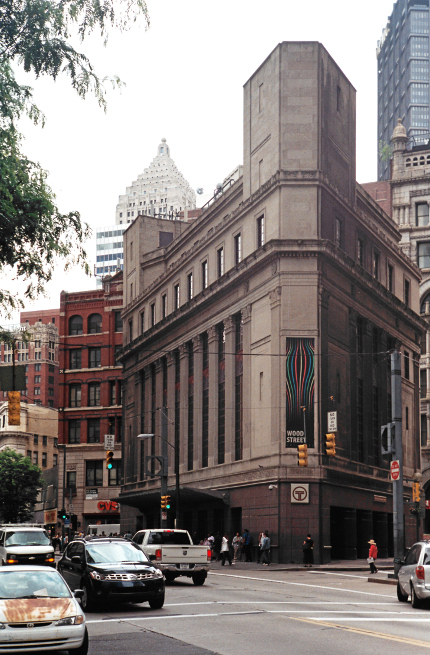
Two colliding grids make up downtown Pittsburgh’s street layout, and the collision happens at Liberty Avenue, giving us a fine array of odd-shaped buildings. This triangular structure, built as a bank, now houses the Wood Street subway station below and the Wood Street Galleries, an important contemporary art gallery, on the upper floors.
While the Gateway Center Station is closed, Wood Street is the terminus of the subway downtown.
This picture was taken with a Kiev-4 camera, a Ukrainian rangefinder that Father Pitt loves with an unreasoning passion. He would like to state for the record that the hideously rusted car in the foreground is not his fault.

The interior of Henry Hornbostel’s City-County Building is designed on the model of a Roman basilica. It’s an excellent example of architecture as message, conveying the idea that your local government, powerful and benevolent, is at your service. It’s also a very practical interior, with the large central hall making it easy to cover the short distances between the most important departments of government. That’s a very good thing, because everyone knows that any dealing with city or county government will inevitably involve visits to at least three separate offices.
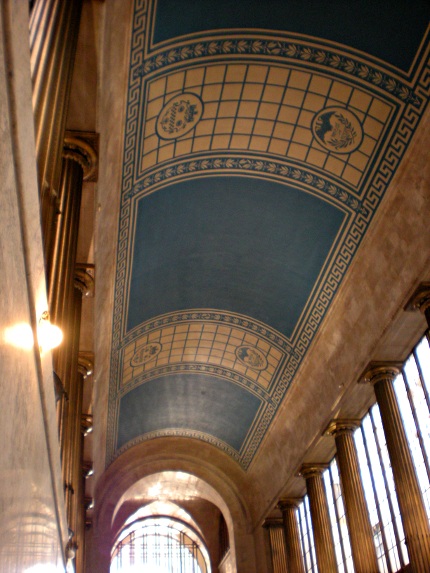
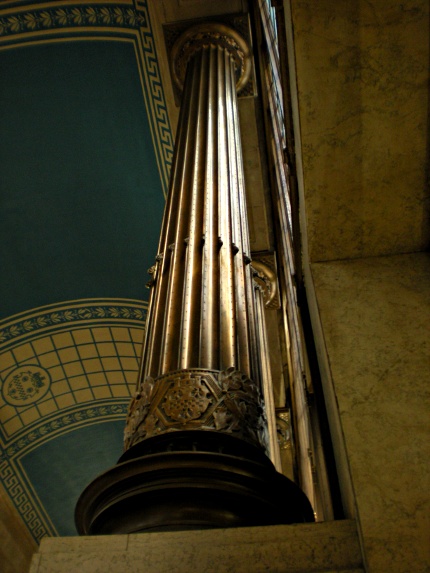

Construction can reveal previously impossible views. Here we see the whole CNG tower from top to bottom, a 1980s postmodernist palace that presents radically different—but still harmonious—faces from different angles.
The elevator doors in the City-County Building give us an allegorical history of the growth of Pittsburgh and Allegheny County and their civic buildings, ending with the current courthouse and the City-County Building itself.

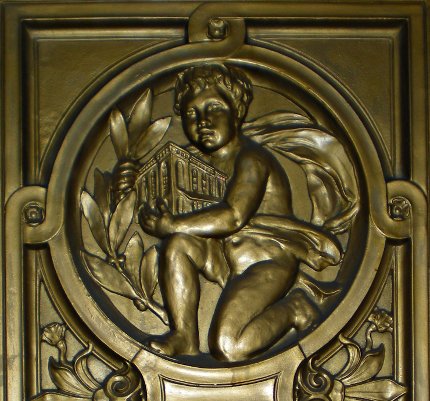
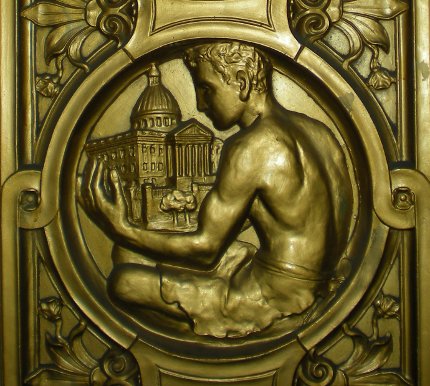


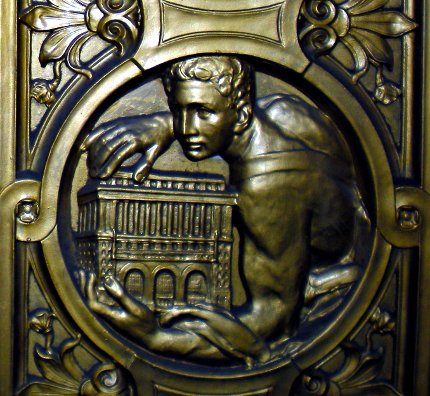
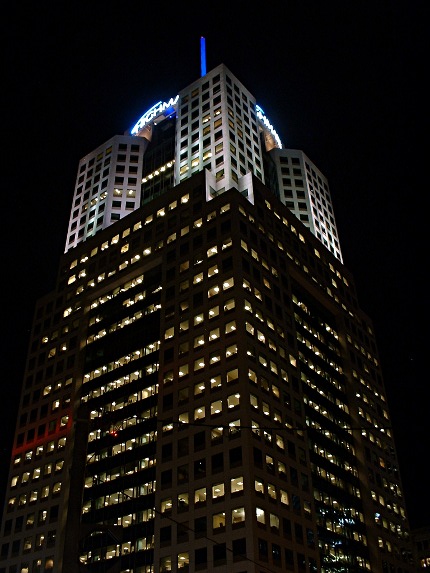
Looking up at Fifth Avenue Place from the intersection of Forbes and Stanwix.

Father Pitt found time for a few last pictures of Gateway Center just hours before the station closed forever. In two years or so, we’ll have a big new station, but old Pa Pitt will still secretly miss the little old one just a bit.
“Pittsburgh Recollections,” installed when the Gateway Center station opened in the middle 1980s, takes us from canoes down the Allegheny to these marvelous modern mainframe computers with their gigantic reel-to-reel tape drives full of data, by way of the French and Indian War, Conestoga wagons, the riverboat era, a banjo that doubtless accompanied songs by Stephen Foster, and the age of steel. The Port Authority is raising money to have the mural restored and reinstalled at the new Gateway Center station. (UPDATE: The mural has been restored and reinstalled at Gateway station.)
A kind reader who signs himself “Matt” had an excellent suggestion:
Any interest in photographing or featuring the old Gateway Center Station one last time before it closes forever this weekend?
It was never a beautiful or impressive space, but of our trio of odd underground stations, Gateway Center was the oddest. It will soon be replaced by a gleaming new station that will doubtless be more convenient and more beautiful. But old Pa Pitt confesses that he was always sneakily proud of the old Gateway Center station when he brought out-of-town visitors downtown. They might come from cities with more expensive or more comprehensive subway systems, but few subway stations are as just plain weird as Gateway Center was. Notice, for example, the low-level platform, now closed off by a rail, that was built to accommodate the old PCC cars when they still ran the Overbrook route—a feature shared by all three of the underground stations downtown.
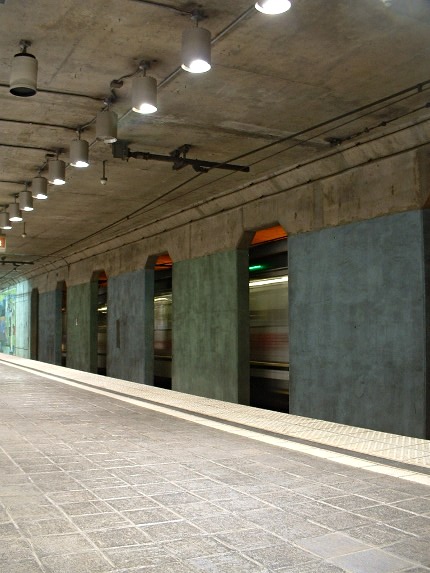
The weirdest aspect of Gateway Center, of course, was the loop. Visitors riding the subway for the first time were always alarmed to see the station they wanted flashing by on their left, as though the car had somehow just missed it. Then came the long squealy loop that threw everybody to the right-hand side of the car, and finally the car re-emerged into the station, this time with the platform on the right side.
We’ll see more pictures of the old Gateway Center station shortly. Meanwhile, the subway ends at Wood Street until further notice, except for the next few weekends, when it ends at First Avenue.